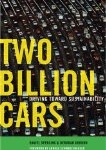 The 2009 Alternative Fuels & Vehicles (AF&V) Conference and Expo has kicked off in Orlando, Florida. The industry event represents all fuels, vehicles and technologies that provide an alternative to petroleum including: natural gas, ethanol, biodiesel, propane, electricity, and hydrogen, and their companion vehicles.
The 2009 Alternative Fuels & Vehicles (AF&V) Conference and Expo has kicked off in Orlando, Florida. The industry event represents all fuels, vehicles and technologies that provide an alternative to petroleum including: natural gas, ethanol, biodiesel, propane, electricity, and hydrogen, and their companion vehicles.
 The exhibit hall opened yesterday and showcases booths from a variety of alternative fuel industry groups and automakers. An important workshop was held this afternoon and focused on the untruths of the alternative fuel industry. The session, Eco-Smackdown: Industry Addresses Untruths About Alternative Fuels, included a panel of experts from industries representing propane, compressed natural gas, biodiesel, and ethanol. An overview was given of each fuel and the audience was allowed to ask how to dispel their untruths and negativity, mainly from the media.
The exhibit hall opened yesterday and showcases booths from a variety of alternative fuel industry groups and automakers. An important workshop was held this afternoon and focused on the untruths of the alternative fuel industry. The session, Eco-Smackdown: Industry Addresses Untruths About Alternative Fuels, included a panel of experts from industries representing propane, compressed natural gas, biodiesel, and ethanol. An overview was given of each fuel and the audience was allowed to ask how to dispel their untruths and negativity, mainly from the media.
 Ethanol breakthroughs were discussed mentioning cellulosic, using corn cobs in pilot plants and the efforts to move from E10 to E15. Curtis Donaldson of CleanFUEL USA said, “How great would it be to combine all these alternative fuels and successfully displace 35 billion gallons of gasoline by the year 2025. The group agreed that it will take all the fuels to displace gasoline. Although there are myths and untruths, we are in a transition. This can be done.”
Ethanol breakthroughs were discussed mentioning cellulosic, using corn cobs in pilot plants and the efforts to move from E10 to E15. Curtis Donaldson of CleanFUEL USA said, “How great would it be to combine all these alternative fuels and successfully displace 35 billion gallons of gasoline by the year 2025. The group agreed that it will take all the fuels to displace gasoline. Although there are myths and untruths, we are in a transition. This can be done.”
Another concurrent session held today was Declaration of Independence: The Domestically Produced Alternative Fuels Solution. An expert panel presented on biofuel options, cost advantages, job growth, environmental benefits and how fleets can begin today to wean the U.S. off of foreign oil.
The AF&V Conference is hosted by the Alternative Fuel & Vehicle Institute.


 Currently most fuel in Oregon contains ten percent ethanol. The Oregon State Marine Board cites caution for using ethanol blended fuel in boats. They say that ethanol can dissolve the inside of certain boat fuel tanks and ethanol absorbs more water.
Currently most fuel in Oregon contains ten percent ethanol. The Oregon State Marine Board cites caution for using ethanol blended fuel in boats. They say that ethanol can dissolve the inside of certain boat fuel tanks and ethanol absorbs more water. Looking for an environmentally friendly way to discuss the power of wind? On May 26-27, 2009,
Looking for an environmentally friendly way to discuss the power of wind? On May 26-27, 2009,  The focus of this year’s Earth Day Indiana event is “how to do cool environmental stuff” and the Indiana Corn Marketing Council (ICMC) and
The focus of this year’s Earth Day Indiana event is “how to do cool environmental stuff” and the Indiana Corn Marketing Council (ICMC) and  In preparation for the ruling, the ethanol industry has been working with CARB to document ethanol as a proven low carbon fuel. Today, the
In preparation for the ruling, the ethanol industry has been working with CARB to document ethanol as a proven low carbon fuel. Today, the 
 As we head into the weekend, some of you may be planning a trip to an auto mile to buy a new car. When you drive away in your new vehicle, you’ll be helping the world get one car closer to the two billion mark. Today there are one billion cars on the road and within the next 20 years, there will be two billion cars on the road. And this is the premise of this week’s book,
As we head into the weekend, some of you may be planning a trip to an auto mile to buy a new car. When you drive away in your new vehicle, you’ll be helping the world get one car closer to the two billion mark. Today there are one billion cars on the road and within the next 20 years, there will be two billion cars on the road. And this is the premise of this week’s book,  A lawsuit filed by
A lawsuit filed by  The Environmental Protection Agency
The Environmental Protection Agency Bob Stallman, President of the
Bob Stallman, President of the  It was the scene of the “day that would live in infamy.” Now, visitors to the USS Arizona Memorial in Pearl Harbor, Hawaii will be able to pay homage to the more than 1,000 heroes honored with a renewable energy source: biodiesel.
It was the scene of the “day that would live in infamy.” Now, visitors to the USS Arizona Memorial in Pearl Harbor, Hawaii will be able to pay homage to the more than 1,000 heroes honored with a renewable energy source: biodiesel.